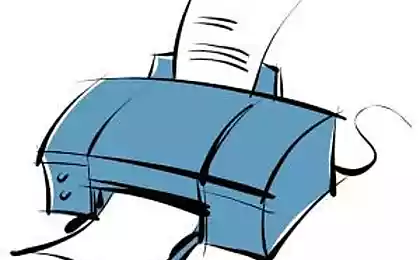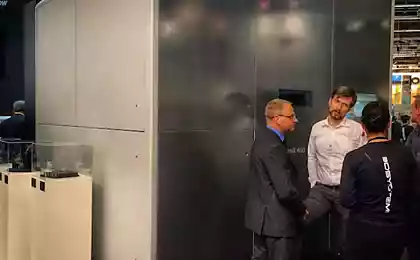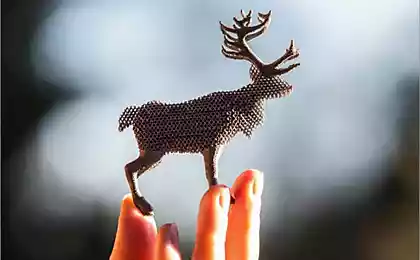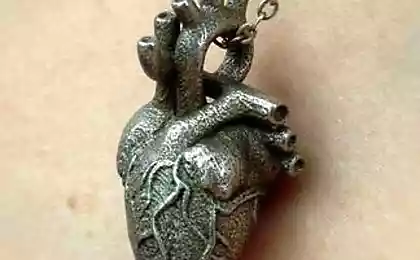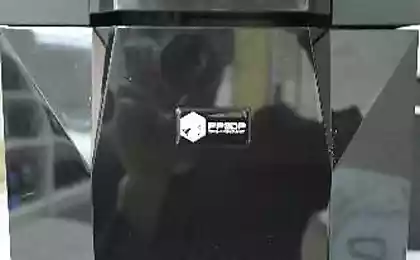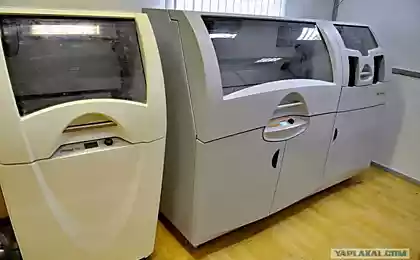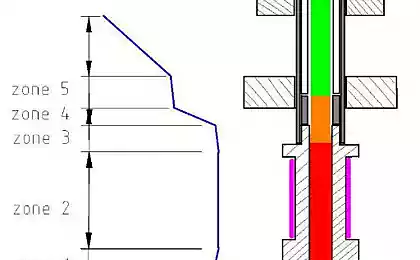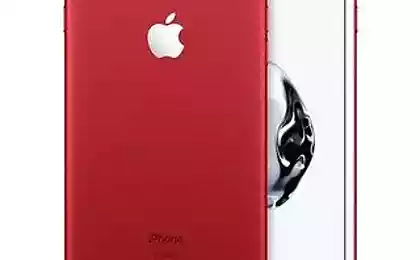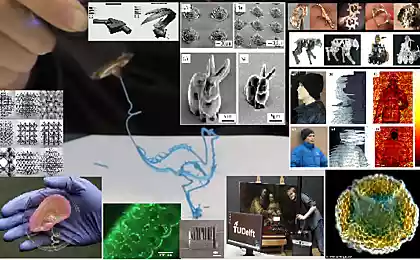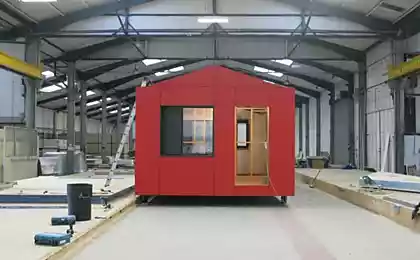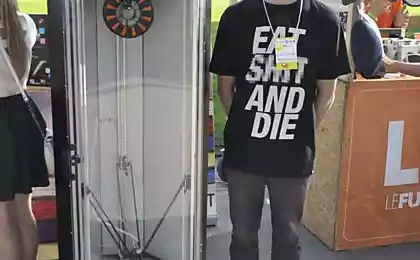1552
Overview of the most popular 3D-printer: UP! Plus 2 and 3 Cube
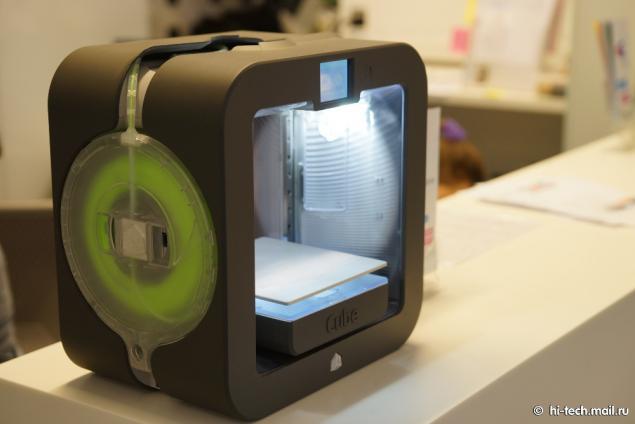
20 years ago to have a home laser printer could not afford one. And indeed they were perceived as exotic. And now a routine turn home 3D-printer. Now it is well-established class of devices that are sold in stores and do not require knowledge of electronics for its assembly. Review of two representatives household of 3D-printers, UP! Plus 2 and 3 Cube, we bring to your attention.
Cubify Cube 3
This printer is designed by the American company 3D Systems, which can be called one of the pioneers in the field of 3D-printers for professional use and for home. Cube Model 3 has quickly become one of the most popular on the market.
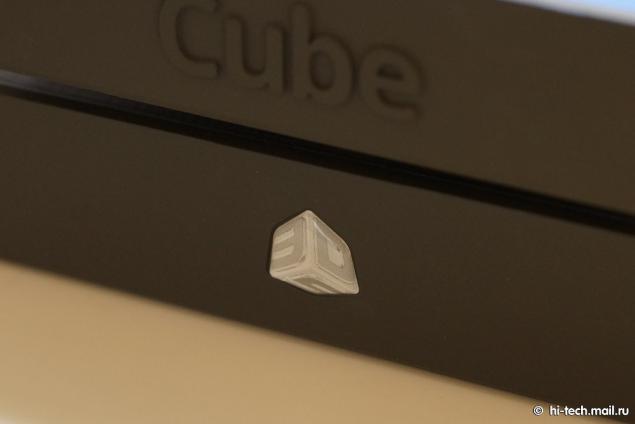
As often happens with new and different types of devices, 3D-printers have passed the stage of gigantism sverhdorogih to small desktop boxes available rather general population. By the way, 3D Systems has officially stated that the development of software for the printer series Cubify they expected that there could understand a child. In a literal sense.
Cube 3 was announced at CES 2014 yet, but in Russia it has not yet appeared in retail. Although this promise soon. If you really need to buy a printer, you can in the Russian office of 3D Systems for $ 1,799 (in the US it costs $ 1,099).
Main characteristics
- The maximum print volume: 152, 5 x 152, 5 x 152 mm 5
- Print resolution: 0, 07 mm
- Print Volume: 3.5 l
- Print speed: 10-100 cc / hr
- Type the workspace: open
- The materials used are: ABS, PLA
- File Format:. STL
- Connection: USB, Wi-Fi (802.11b / g)
- Supported OS: Windows: XP, Vista, 7, 8; MAC OS X
- Dimensions: 335 x 338 x 280 mm
- Weight: 7, 7 kg
Design and construction
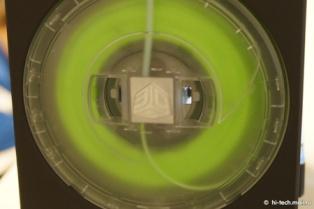
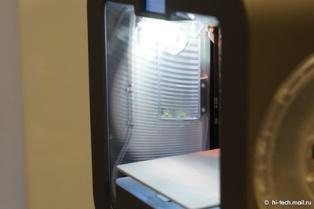
Appearance printer is significantly different from the previous model, Cube 2. It does not look deliberately Technical i> , on the other hand, looks Cube 3 allows it very organically fit into the interior. Print area, equipped with lighting, nothing is locked, you can smoothly oversee the process. At the same time will have to regularly dust.
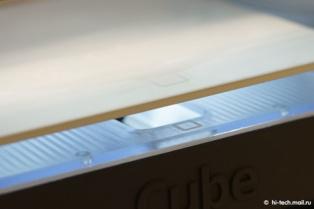
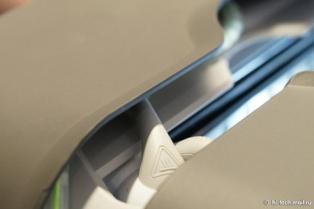
On each side of the work area located vertical guides, which moves in a vertical plane platform to create products. It is printed directly on the smooth plate fastened to the platform on the magnets. Coil with plastic thread is on the left. In Cube 3 you do not even have to file individual thread in the print head, it is enough to insert a tube extending from the coil into the slot. However, this is one of the main and inconvenience: you can not use non-Xerox supplies, only proprietary coil from 3D Systems.
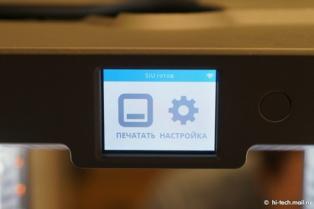
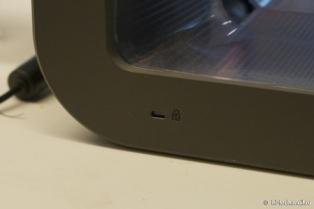
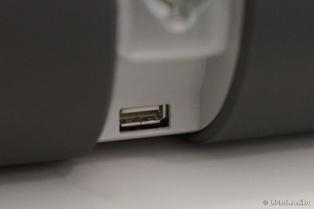
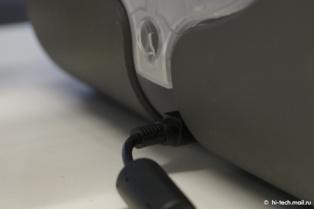
In front of the work area is a small touch screen. It allows you to control the printer, including calibration platform to run, and view the color model of the product. Near the screen is a button on. Power connector and USB are on the sides, on the bottom of the printer. Also, the printer is equipped with a Wi-Fi-module.
Ideology ease of use is also manifested in the fact that the printer is ready to go right out of the box. It suffices to establish the working surface to the platform.
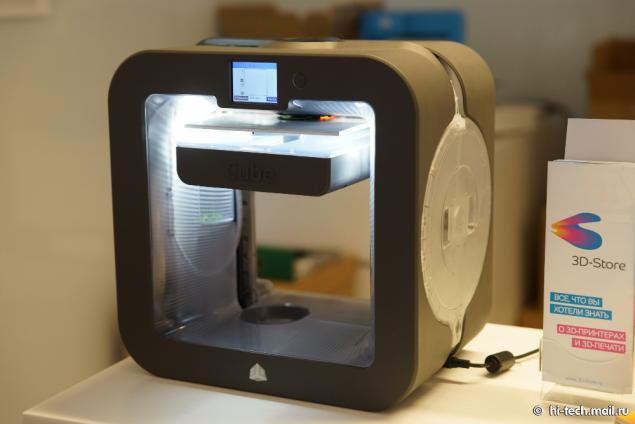
Software
To work with your printer, you must install the application Cubify. It exists in versions for Windows, Mac, Android and iOS. Interface makes a very favorable impression, it is clear that the authors have devoted considerable attention to their offspring: well thought out size of interface elements, their composition and location.
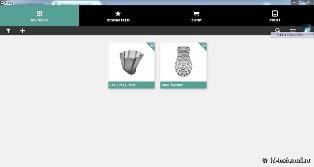
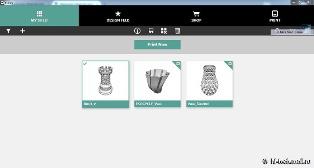
Cubify has a fairly limited capacity, you will not be able to control every element of the generated product. But the app really can master even a child, it is very user friendly.
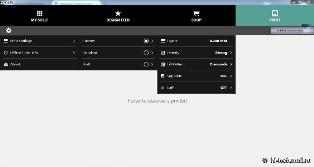
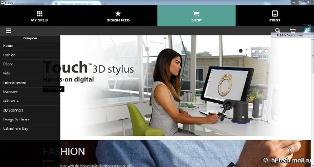
The application has a built-shop where you can buy other software for 3D-printing and 3D-scanning. Thus, 3D Systems creates an entire ecosystem, in which users are free to choose the combination of "device-software." With the help offered in the app store, you can draw three-dimensional models and convert them to pictures, and use the camera to a 3D-printer. There are both paid and free applications that are of interest and users of 3D-printers of a higher class.
In this paper

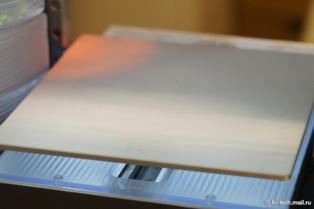
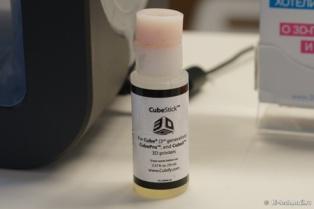
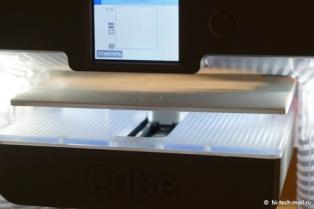
Complete with 3 Cube are two coils of plastic PLA and glue. The printer allows you to use plastics PLA and ABS, although constructive, nothing prevents use of other materials, but above all depends on the brand of the coil. However, the manufacturer plans to soon start producing and nylon thread for their printers.
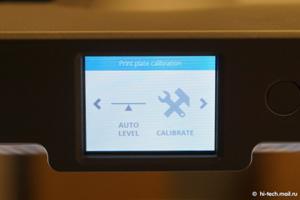
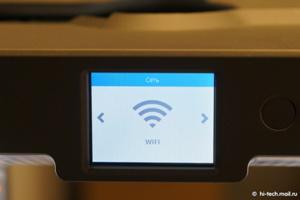
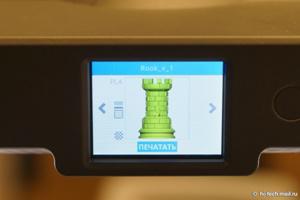
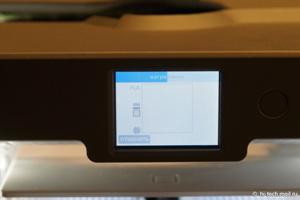
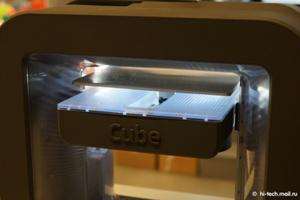
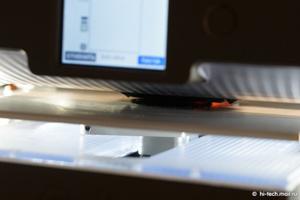
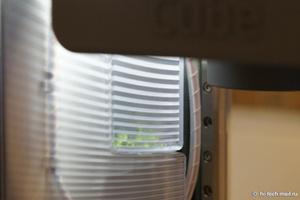
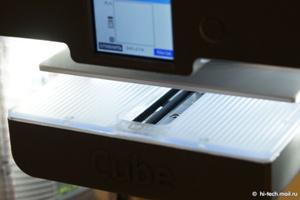
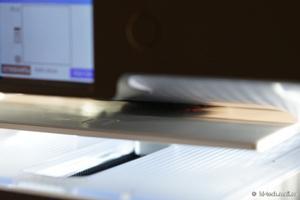
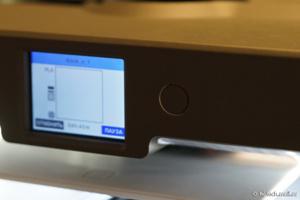
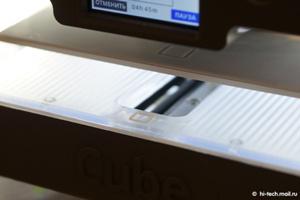
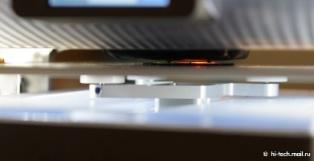
The device only works with the file format STL. Before printing, the work surface should be lubricated with a special adhesive that are provided. Using the touch screen, you can adjust the print resolution. Speed, unfortunately, can not be adjusted.
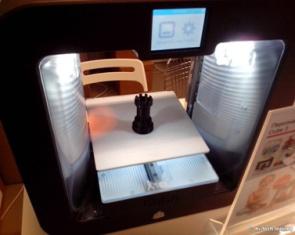
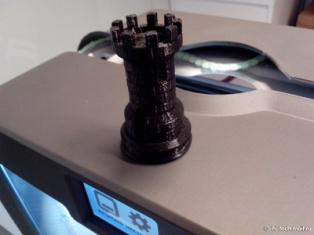
The above model rooks Printer Prints 4 hours and 50 minutes. Despite the resolution of 70 microns, the quality was very decent, additional processing is almost required. So Cube 3 will fit perfectly and prototyping, and not only for DIY. Printer works very quiet for this class of devices, so it is quite possible to keep in the living room.
UP! Plus 2
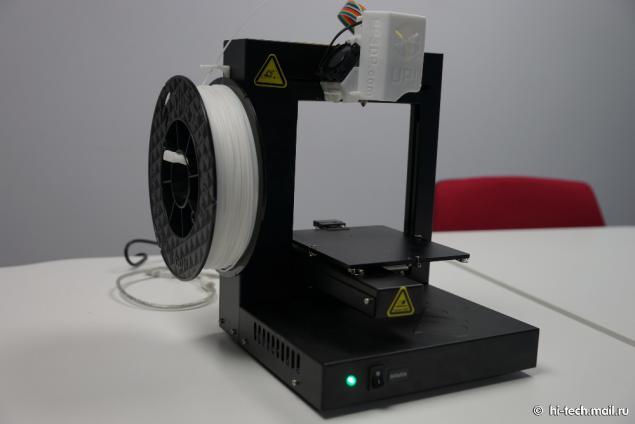
The second device in this review is an updated version of the main models in the lineup of the Chinese company PP3DP. Ignore the "Chinese", its parent company Tiertime long earned itself a high reputation in the industrial market of 3D-printers. UP! Plus 2 went on sale back in 2013, that by the standards of the younger market of 3D-printers a very long time. However, the device still remains attractive to buyers. The printer is small, easy to learn and comes with a handy application UPWare. By the way, the device is available in our country in retail. The cost of about 89 thousand. Rubles.
Main characteristics
- The maximum amount of printing: 140h140h135 mm
Design and construction
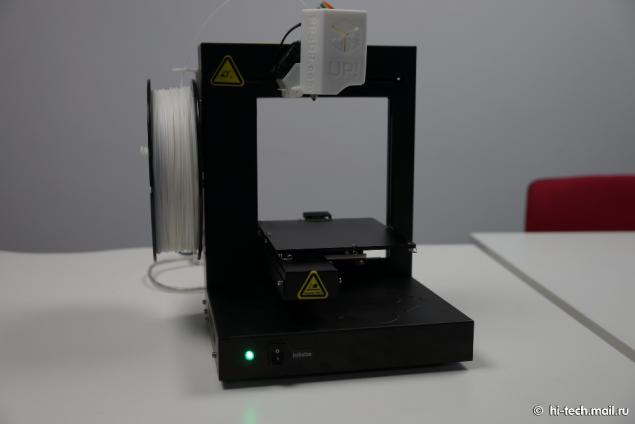

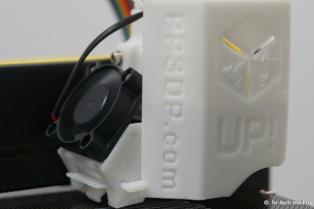
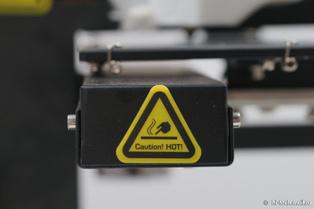
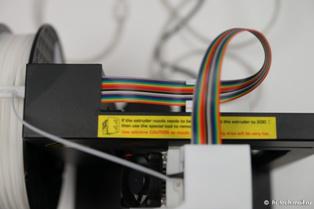
The appearance of the printer is the most that neither is geeky. The working area is completely open. Asymmetric metal frame with a large coil does not look too aesthetically pleasing, so that the printer is unlikely to be interior decoration. It would be better placed in the technical room or cabinet. By the way, some of the plastic parts of the device themselves are printed on 3D-printer.
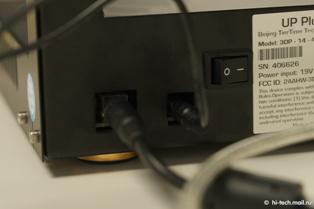
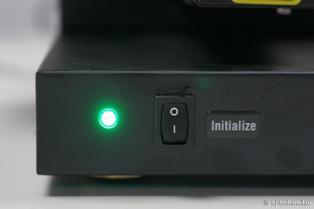
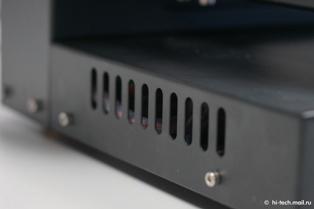
The procedure for the preparation of the work is simple: it is enough to fix the jobsite, calibrated using the software, install the spool of thread and pull it to the extruder. Located behind the power button, the front - ID button. Also on the case there is a power connector and USB. Screen printer does not, all controlled from the computer.
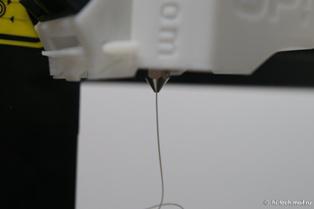
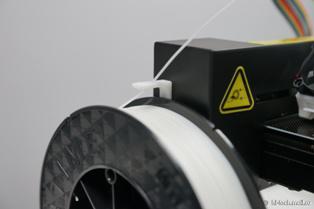
Head and moving the platform in the horizontal plane, but perpendicular to each other. One of the drawbacks inherent in all printers with an open work area, is the possibility of too rapid or uneven cooling of molten filaments due to drafts or too low temperature in the room, which can degrade the quality of the product. So we recommend to pay attention to this point.
Software
Business application to work with the printer looks very clumsy, especially when compared with Cubify. Periodically, there are problems with the encoding, which is why the text is converted into a set of question marks. However, it is not difficult to deal with the application, it is easy to learn, there are versions for Windows and Mac.
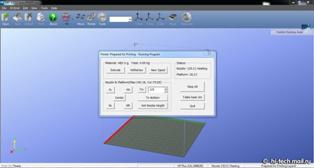
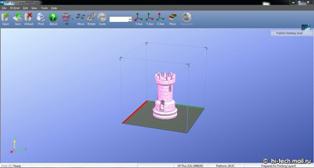
The app allows you to adjust not only the quality but also the print speed and flow of the thread. In addition, it has a smart system automatically create supports for substrates and products, so in most cases you can not provide for their presence in the model. UPWare allows you to work with a variety of popular 3D-editors, from Autodesk Inventor to 3DSMax.

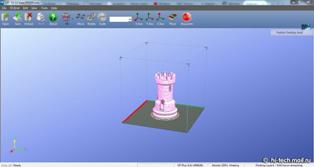
In addition to these settings, UPWare allows you to choose the scale, orientation model, the thickness of the layers and walls, the degree of filling. After the start of printing, the printer can be disconnected from the computer, it will finish the work in offline mode. If you connect again, you can check at what stage is the process of printing and stop it to replace the coil.
In this paper

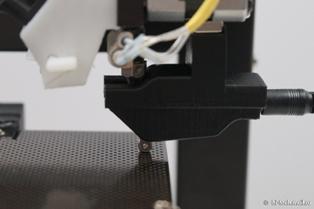
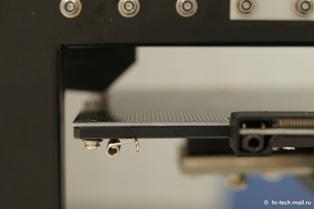
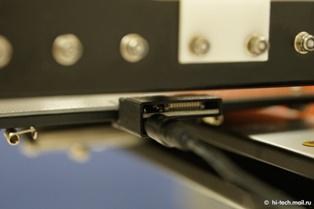
Printer Calibration is not as simple as in the case of Cube 3, but nothing really complicated about it there. Printhead need to set the calibrator, connect it to the proper connector, run the setup level of the head, and then did the same with the platform.
Unfortunately, the printer is equipped with Wi-Fi, so that all communication with him is carried by cable. The printer is also easy to set up and manage, but still not as much as Cube 3.
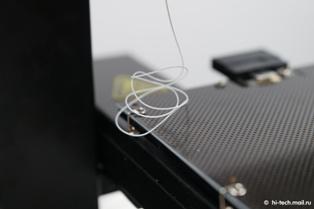
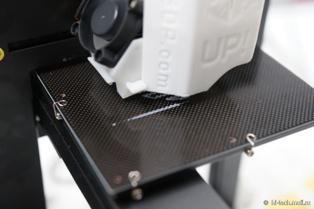
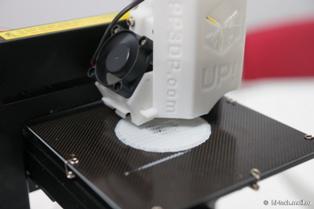
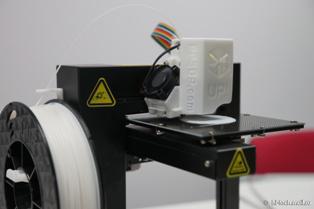
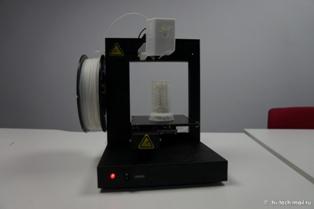

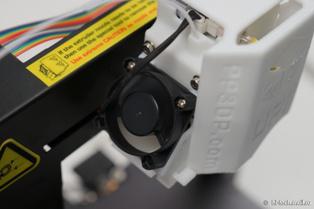
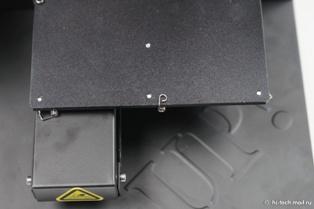
UP! Plus 2 also publishes two types of plastic, PLA and ABS. The set comes in single coil ABS-thread. It's nice that the coil design allows the use of consumables from other manufacturers, including materials such as nylon and Crystal Flex. However, it is the quality and printing speed will be unpredictable, but you can print.
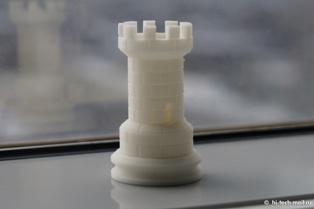
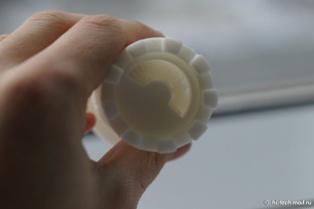
Minimum print resolution ABS-plastic is 150 microns, the maximum speed - up to 100 cubic centimeters per hour. For amateur device is quite decent options. The same chess rook was printed in 9 hours and 40 minutes. Noise operation moderate clamping ears or wince at the printer you will not have to.
Our opinion
On the example of Cube 3 and UP! Plus 2 very clearly demonstrated the transformation of 3D-printers, their penetration into the mass segment. Both devices require only a minimum of preparation for the first run, in fact, they have been working out of the box. The software is easy to learn, does not make go into the settings and allows you to print "at the touch of a button." The quality of the print is a more than worthy for the amateur level, if you wish, you can use ready-made products as prototypes.
Cube 3 has a very pleasant appearance and very easy to handle. They can be controlled via Wi-Fi, including mobile devices. Accuracy print almost 2 times higher than that of UP! Plus 2. The disadvantages are the proprietary consumables.
UP! Plus 2, in contrast, "omnivorous" both in terms of consumables producers, and from the point of view of materials used. The cost of the printer is slightly lower than the Cube 3. The disadvantages are not too attractive appearance, a little more complex configuration and management, the lack of built-in screen and Wi-Fi, 150 micron resolution, as well as not fully thought-out and software.
Both devices are equally suited to amateur modelers and designers, as well as appropriate will be children's clubs. Of course, the market for such devices is still small, most of these devices yet classified as "fad for geeks." Nevertheless, the demand for 3D-printer will grow gradually as they further improvement.
Source: geektimes.ru/company/mailru/blog/245088/
































